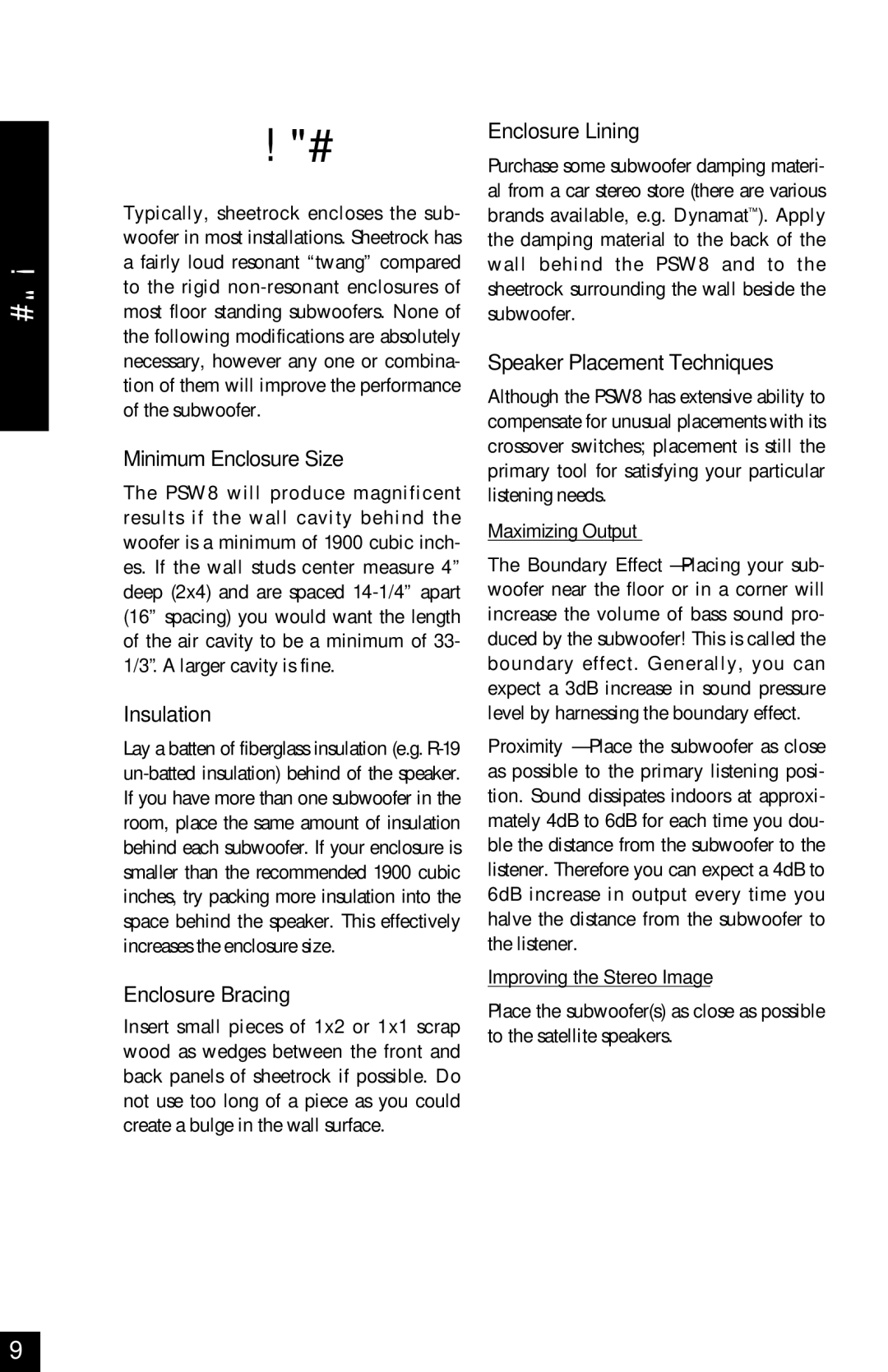Treatment & Placement
Treatment & Placement
Typically, sheetrock encloses the sub- woofer in most installations. Sheetrock has a fairly loud resonant “twang” compared to the rigid
Minimum Enclosure Size
The PSW8 will produce magnificent results if the wall cavity behind the woofer is a minimum of 1900 cubic inch- es. If the wall studs center measure 4” deep (2x4) and are spaced
Insulation
Lay a batten of fiberglass insulation (e.g.
Enclosure Bracing
Insert small pieces of 1x2 or 1x1 scrap wood as wedges between the front and back panels of sheetrock if possible. Do not use too long of a piece as you could create a bulge in the wall surface.
Enclosure Lining
Purchase some subwoofer damping materi- al from a car stereo store (there are various brands available, e.g. Dynamat™). Apply the damping material to the back of the wall behind the PSW8 and to the sheetrock surrounding the wall beside the subwoofer.
Speaker Placement Techniques
Although the PSW8 has extensive ability to compensate for unusual placements with its crossover switches; placement is still the primary tool for satisfying your particular listening needs.
Maximizing Output
The Boundary Effect – Placing your sub- woofer near the floor or in a corner will increase the volume of bass sound pro- duced by the subwoofer! This is called the boundary effect. Generally, you can expect a 3dB increase in sound pressure level by harnessing the boundary effect.
Proximity – Place the subwoofer as close as possible to the primary listening posi- tion. Sound dissipates indoors at approxi- mately 4dB to 6dB for each time you dou- ble the distance from the subwoofer to the listener. Therefore you can expect a 4dB to 6dB increase in output every time you halve the distance from the subwoofer to the listener.
Improving the Stereo Image
Place the subwoofer(s) as close as possible to the satellite speakers.
9
